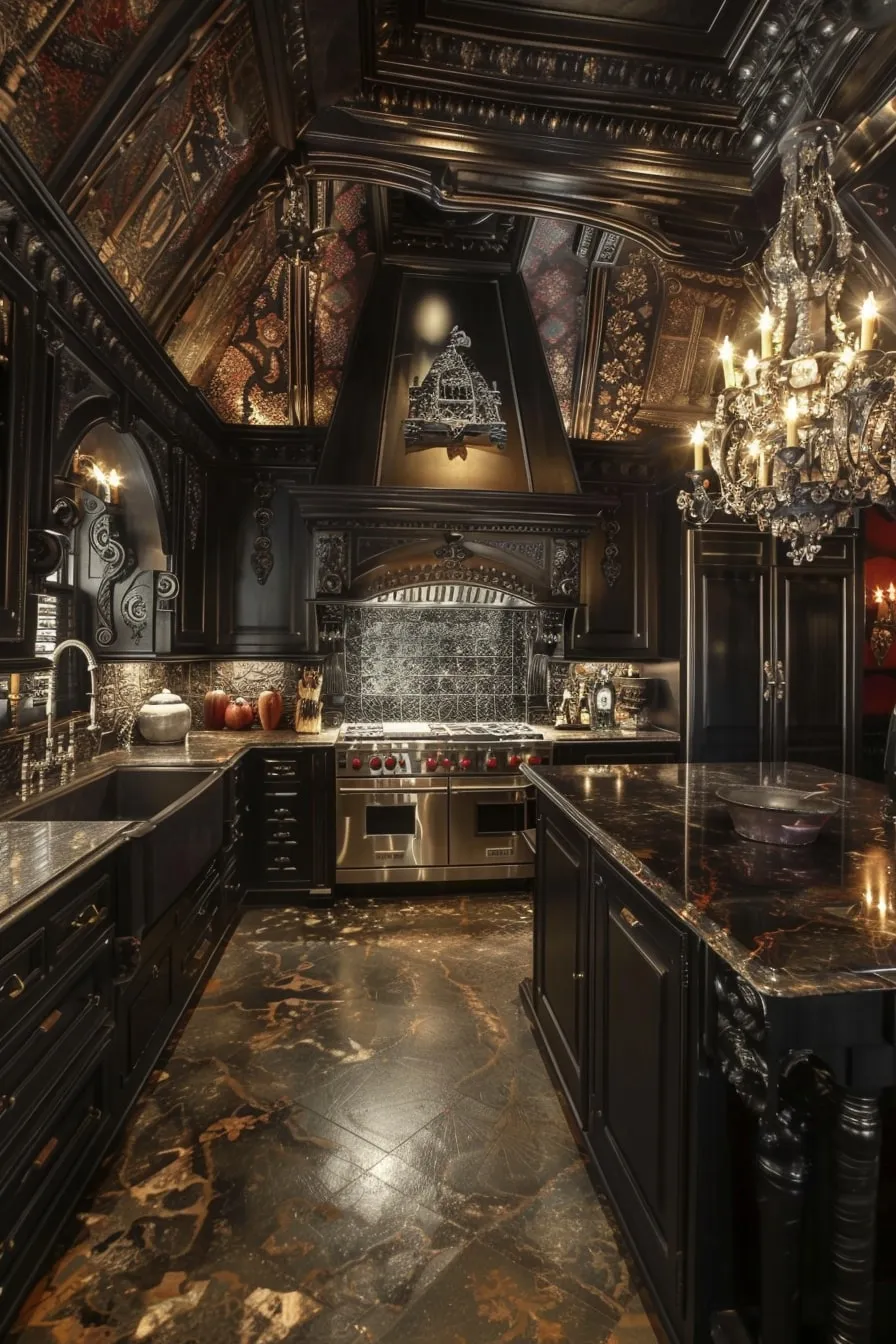Understanding Gothic Kitchen Decor Layout
Transforming your kitchen into a Gothic haven is more than just adding a few dark accents; it’s about creating a space that evokes the mystery, elegance, and dramatic flair of the Gothic era. A well-planned Gothic kitchen decor layout will seamlessly blend functionality with aesthetics, resulting in a unique and captivating culinary space. This guide provides a comprehensive approach, from understanding the core elements of Gothic style to practical layout tips and DIY suggestions, helping you bring your vision to life.
Defining Gothic Style
Gothic style, originating in medieval Europe, is characterized by its architectural grandeur, ornate detailing, and a sense of drama. In interior design, this translates to a preference for dark, rich colors, heavy textures, and the incorporation of historical motifs. The Gothic aesthetic emphasizes a sense of history, sophistication, and often, a touch of the macabre, all contributing to its distinct allure.
Key Characteristics of Gothic Design
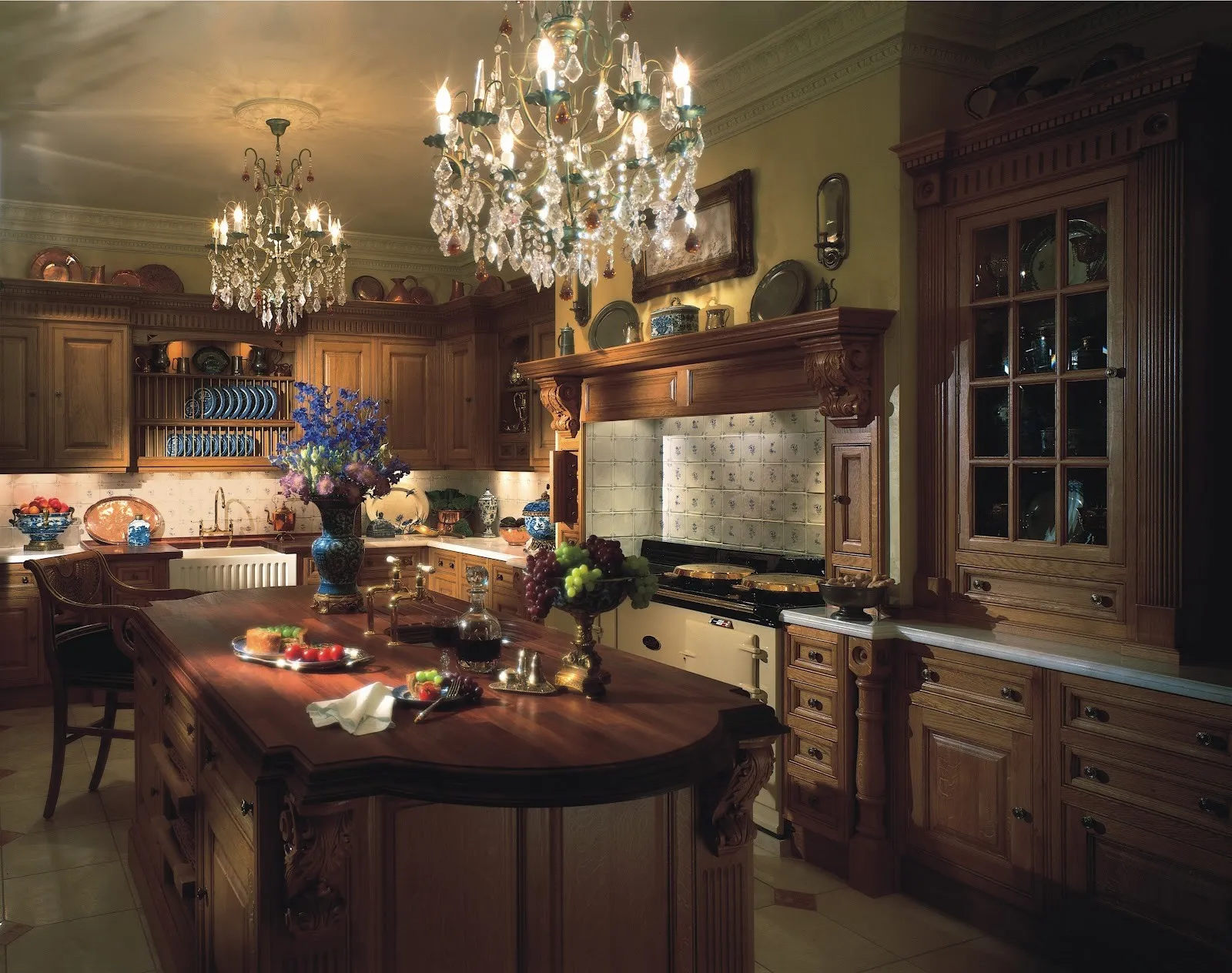
Key features include pointed arches, ribbed vaults, and elaborate tracery, which find their way into furniture design and decorative elements. A darker color palette, often including deep reds, purples, and blacks, provides a dramatic backdrop. The use of natural materials like wood and stone, along with the incorporation of religious or historical symbols, further defines the style. Intricate carvings, wrought iron details, and heavy, luxurious fabrics such as velvet and brocade, contribute to the overall opulent feel.
Elements of a Gothic Kitchen
To create a Gothic kitchen, consider the following elements which will help you to achieve that desired atmosphere and style. The integration of these elements will ensure you achieve the authentic Gothic feel you’re aiming for. Remember to balance these features to maintain functionality and create a cohesive, inviting space.
Color Palette
The color palette is fundamental. Deep, saturated colors such as burgundy, emerald green, navy blue, and black form the base. These can be used for cabinetry, walls, or accent pieces. Metallic accents in gold, silver, or bronze add richness and contrast, preventing the space from feeling too dark. Consider a lighter shade on the ceiling to balance the darkness, ensuring the kitchen feels inviting.
Furniture and Fixtures
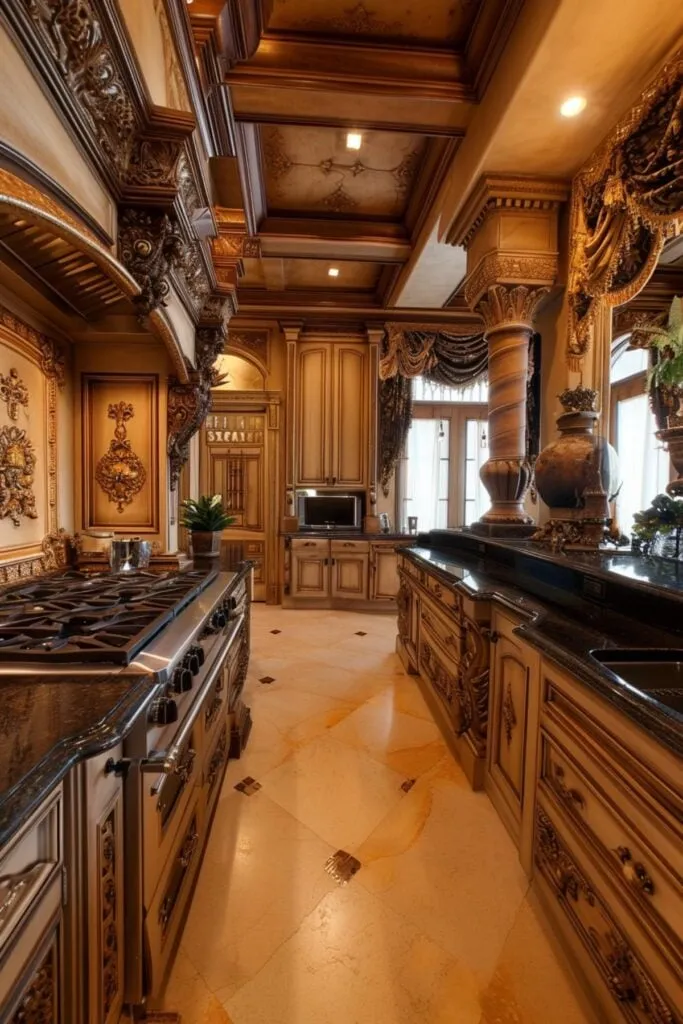
Choose furniture with strong lines and ornate details. Think dark-stained wooden cabinets with pointed arches or detailed carvings. A substantial kitchen island can serve as a focal point, perhaps with a stone or dark-colored countertop. Incorporate wrought-iron fixtures for a touch of authenticity, such as cabinet pulls, pot racks, or even a kitchen island base. Aim for pieces that are both functional and decorative, reflecting the historical aesthetic.
Decorations and Accessories
Accessorize with items that enhance the Gothic theme. Antique candelabras, wrought-iron candlesticks, and ornate mirrors can create a dramatic ambiance. Display antique kitchenware or pieces with religious or historical motifs. Incorporate textiles such as velvet drapes or embroidered table runners. Think about adding gothic-inspired artwork or portraits on the walls to enhance the overall theme.
Planning Your Gothic Kitchen Layout
Effective layout planning is essential to ensure your Gothic kitchen is both functional and visually appealing. Consider the space you have and how you can best utilize it to create a cohesive design. This involves thinking about the flow of movement, the positioning of appliances, and the placement of Gothic elements. The goal is to achieve a balance between style and practicality, creating a kitchen that is a pleasure to use and a feast for the eyes.
Assessing Your Space
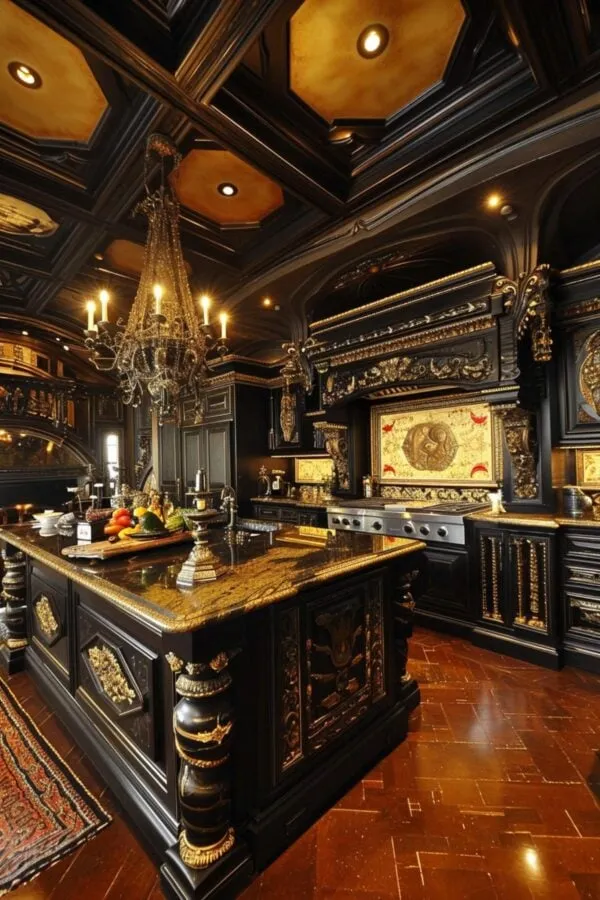
Before starting any project, accurately assess your kitchen space. Measure the dimensions of the room, including the height of the ceilings and the location of doors and windows. Note any existing features such as plumbing, electrical outlets, and built-in structures. Identify any limitations, such as awkward angles or areas with restricted access. This assessment forms the foundation for your layout design, helping you avoid costly mistakes.
Layout Considerations
Consider the flow of movement within your kitchen, the placement of appliances, and how you will use the space. The work triangle—the area between the sink, refrigerator, and stove—should be efficiently designed to optimize workflow. Ensure there is ample counter space for food preparation and storage. Think about how you will use the kitchen on a daily basis to customize the layout to your needs. Incorporating these elements will ensure a practical and enjoyable kitchen environment.
Optimizing Functionality
Maximize functionality by incorporating storage solutions. Install cabinets with soft-close mechanisms and pull-out shelves for easy access. Use a kitchen island to increase counter space and add storage. Consider incorporating a pantry for food and appliance storage. Efficient storage and well-placed appliances are essential for functionality within the Gothic kitchen.
Selecting the Right Furniture
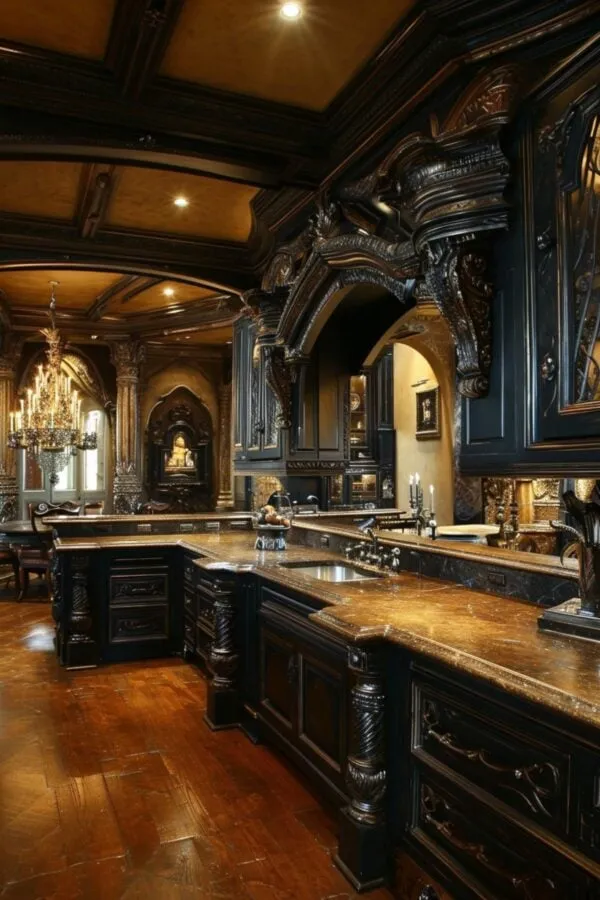
Choose furniture that complements the Gothic style while providing practical solutions for your kitchen needs. Select a kitchen table that aligns with the Gothic aesthetic, perhaps a dark wood table with ornate legs and matching chairs. Ensure that the furniture is durable and suitable for daily use. The right furniture not only adds style but also provides a functional area for cooking, eating, and entertaining.
Choosing Gothic-Style Cabinets
Cabinets are a crucial element in setting the tone of your Gothic kitchen. Opt for cabinets made from dark wood, such as mahogany or walnut, with intricate carvings, pointed arches, or ornate hardware. Consider a painted finish in deep colors, such as black, burgundy, or forest green. The style of the cabinets must align with your overall Gothic vision.
Selecting Countertops
Countertops should complement the overall design. Granite or marble in dark colors can add to the Gothic feel. Consider using soapstone, which has a natural, matte finish that fits well with the Gothic theme. Alternatively, a dark, stained wood countertop can add warmth and texture. The goal is to select materials that are both durable and visually appealing, contributing to the kitchen’s design.
Incorporating Gothic Elements
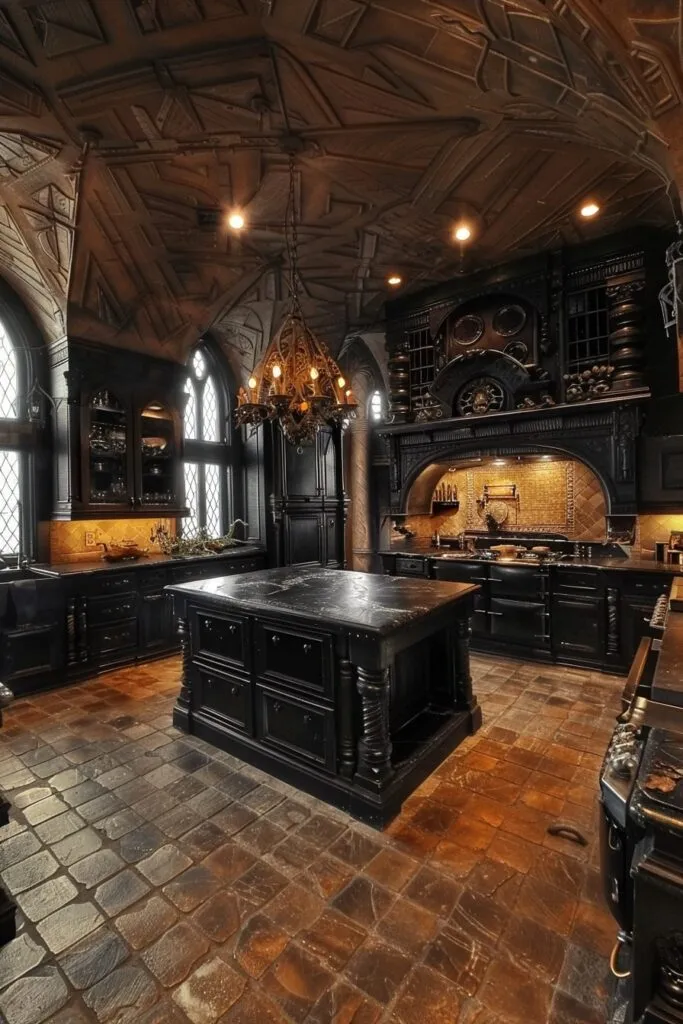
Adding specific Gothic elements is key to transforming your kitchen into a Gothic masterpiece. This involves strategically placing lighting, decorative objects, and textiles. This will create the desired ambiance of the Gothic style, creating a distinct and immersive aesthetic. Consider each element carefully to ensure it harmonizes with the other features of the kitchen.
Lighting and Fixtures
Lighting plays a vital role in establishing the mood. Use a combination of ambient, task, and accent lighting. Install a chandelier with a Gothic design over the kitchen island or dining area. Incorporate sconces with wrought-iron details or decorative pendant lights. Dimmer switches are essential to control the light levels and create a dramatic atmosphere.
Choosing Gothic Lighting Fixtures
Select lighting fixtures that reflect the Gothic style. Wrought iron chandeliers with candle-style bulbs are a classic choice. Alternatively, choose pendant lights with intricate metalwork or stained-glass shades. Sconces featuring dark finishes and unique shapes can add a touch of elegance. Pay attention to the details and choose fixtures that complement the overall design.
Adding Decorative Elements
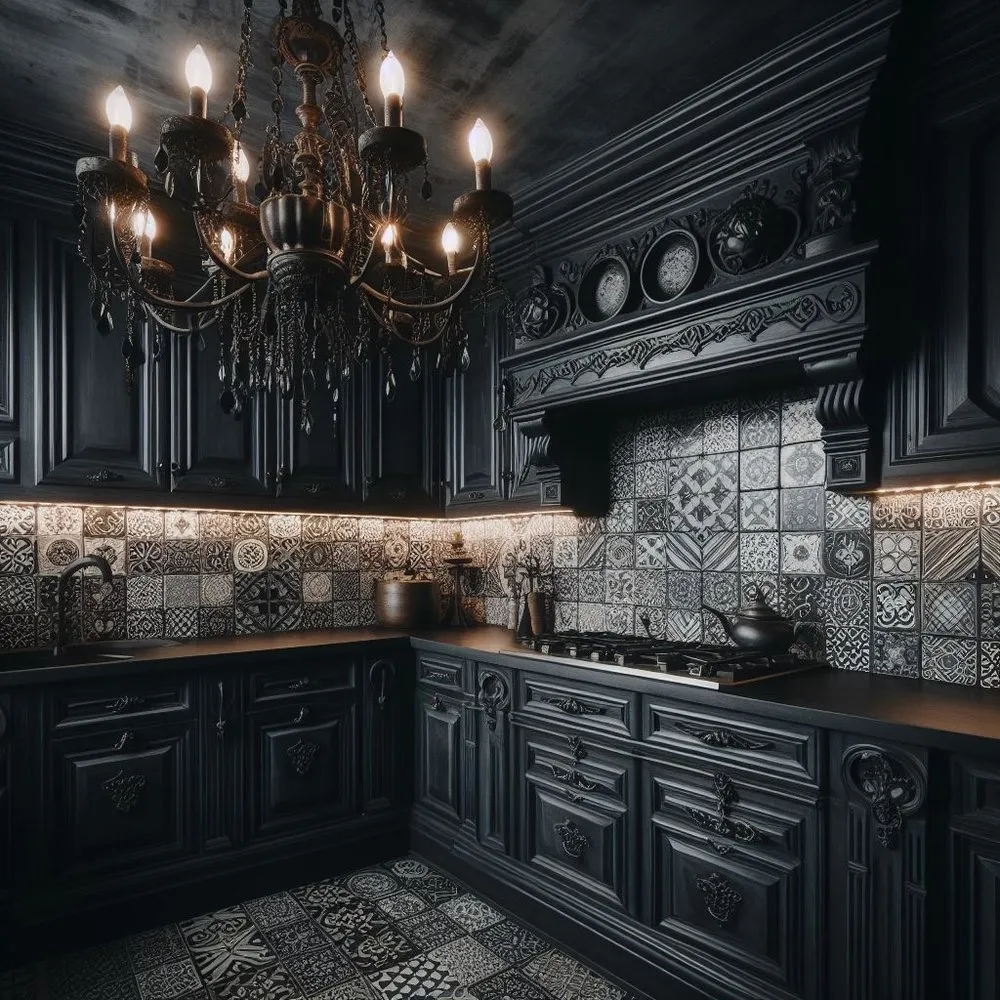
Decorative elements are critical in adding character and authenticity. Incorporate antique mirrors with ornate frames to reflect light and enhance the sense of space. Display antique kitchenware on open shelving or in glass-front cabinets. Choose artwork with religious or historical themes to enhance the atmosphere. The more unique and historical elements you add, the more Gothic your kitchen will become.
Wall Decor and Artwork
Wall decor can add personality and sophistication. Hang artwork that evokes the Gothic era, such as portraits, landscapes, or religious scenes. Display decorative plates or tapestries on the walls. Consider adding a gallery wall with framed prints or illustrations in dark, ornate frames. The right wall decor will add to the authentic Gothic ambiance.
Textiles and Fabrics
Textiles and fabrics can add warmth and texture. Use velvet drapes or Roman shades in rich colors like burgundy or deep green. Add a patterned tablecloth or table runner made from heavy fabrics. Use cushions and chair upholstery made from brocade or damask fabrics. Ensure that your textiles are in line with the overall aesthetic.
Bringing Your Gothic Kitchen to Life
Bringing your Gothic kitchen to life involves practical considerations such as planning a budget, deciding between DIY and professional help, and choosing materials that fit your budget. Careful planning will help you to execute your vision efficiently and economically. From deciding on a budget to weighing the benefits of DIY versus professional assistance, the process can be enjoyable and rewarding.
Budgeting and Planning
Determine a realistic budget. Research costs of materials, furniture, and potential professional services. Prioritize elements that are most important to you and allocate your budget accordingly. Creating a detailed plan and sticking to it will help you avoid overspending and ensure your Gothic kitchen meets your expectations. Planning will help you to stay within the budget and get the Gothic kitchen you desire.
DIY vs Professional Help
Decide whether to tackle the project yourself or hire a professional. DIY projects can be cost-effective but require time and skill. Hiring a professional will ensure high-quality results, particularly for complex tasks, but will increase the costs. Evaluate your capabilities, budget, and the scope of the project before making a decision. If you are not comfortable with the project, it is usually better to hire a professional.
Maintaining Your Gothic Kitchen
Maintaining your Gothic kitchen involves regular cleaning, care for the materials, and protecting the finishes. Regular cleaning is essential to keep your kitchen looking its best. Wipe down surfaces regularly, and promptly clean up spills. Protect finishes by using coasters and placemats. Prevent scratches on countertops by using cutting boards. Careful maintenance will keep your kitchen in excellent condition, and help you enjoy it for years to come.
